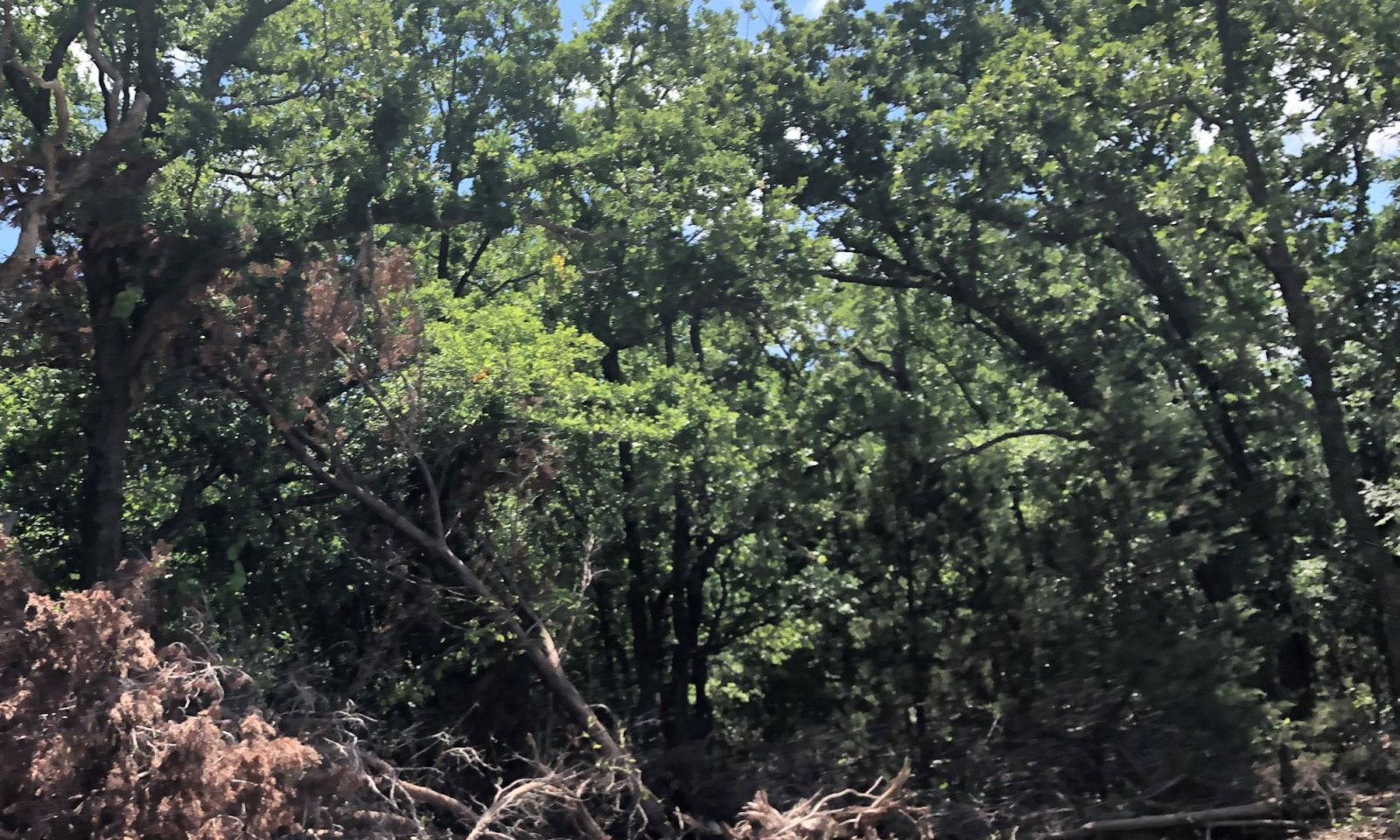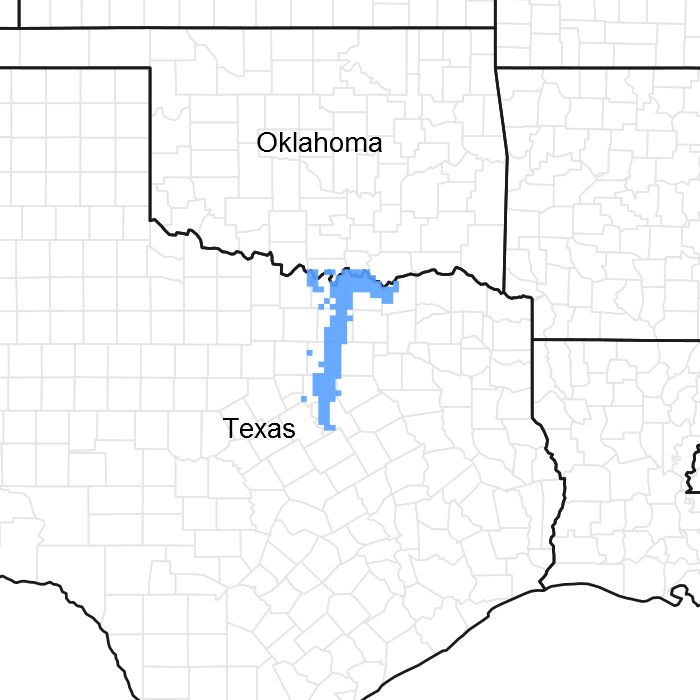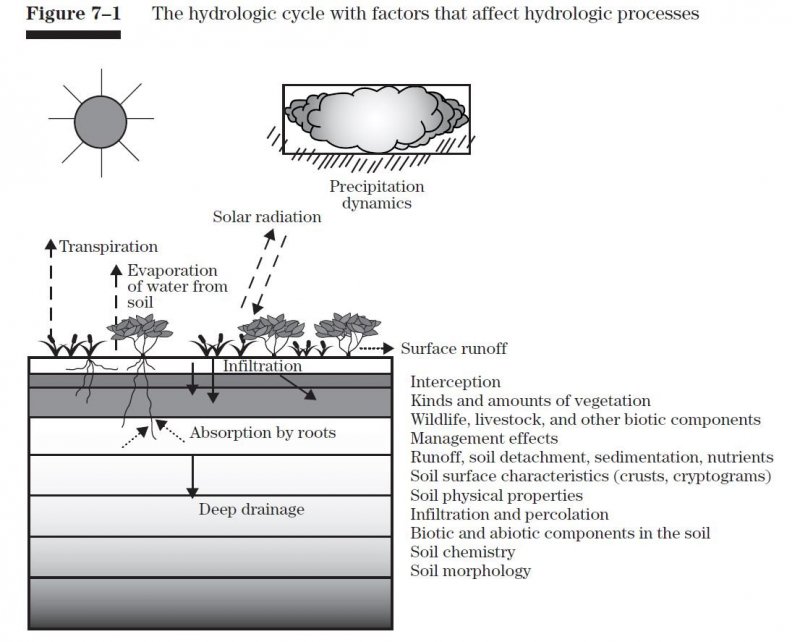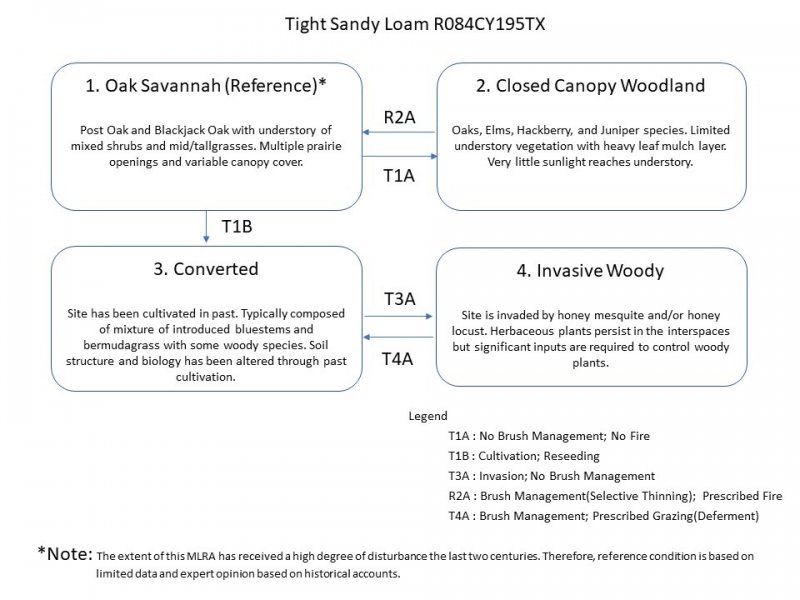Ecological dynamics
Like many sites across the Great Plains, changes in disturbance initiated by permanent settlements have had a profound impact on the ecological dynamics of the Tight Sandy Loam ecological site. Historically, the site was influenced by periodic fires during all seasons of growth. These fires were often the result of dry lightning strikes or anthropogenic fires set by Native Americans. The fire frequency during the period prior to settlement is estimated between 2 to 5 years for the southern Great Plains. These frequent fires were often followed by grazing of migratory bison herds attracted to the new growth of grass. This led to a shifting mosaic between burned/grazed and unburned and ungrazed landscapes.
With the removal if fire and the introduction of conventional livestock fencing, the landscape began to change to more homogeneous vegetation patterns and altered plant communities. Gently sloping sites like the Tight Sandy Loam site were often broke out for crop production. This led to a highly fragmented, highly disturbed landscape we see today across much of MLRA 84C.
While parts of the MLRA are still intact prairie, they often lack the evolutionary fire and grazing interactions that help shape the historic reference plant communities.
State and Transitional Pathways:
The following diagram suggests some pathways that vegetation on the ecological site might take in response to various treatments or natural stimuli over time. There may be other states that are not shown on this diagram. This information identifies the changes in plant communities that occur due to management practices and natural factors. The plant communities described here are commonly observed on this ecological site. The local NRCS field office has information available to assist with planning and development of the plant community for specific purposes.
Changes in plant community makeup may be due to many factors. Change may occur slowly or in some cases, fairly rapidly. As vegetative changes occur, certain thresholds are crossed. A threshold means that once a certain point is reached during the transition of one community to another, a return to the previous state may not be possible without the input of some form of energy. This often means intervention with practices that are not part of natural processes. An example might be the application of herbicide to control some woody species to reduce their population and encourage more grass and forbs growth. Merely adjusting grazing practices would probably not accomplish any significant change in a plant community once certain thresholds are crossed. The amount of energy required to effect change in community would depend on the present vegetative state and the desired change.
State 1
Oak Savannah - Reference
This is the reference state for the Tight Sandy Loam ecological site. It represents the historic range of variability in the plant communities with the periodic disturbance of fire and grazing. It is a mosaic of herbaceous plants oak species and woody understory vines and shrubs.
The dominant trees are post oak and black jack oak with a mixture of tall and midgrasses, forbs and shrubs in the understory and canopy interspaces. Dominant herbaceous plants include little bluestem, sideoats grama, silver bluestem, and Texas wintergrass. Other grasses include big bluestem, Indiangrass, wildryes, dropseeds, sedges, and Scribner's panicum. Forbs include sagewort, sunflowers, tickclover, lespedezas, wildbeans, yellow neptune, Other woody plants include bumelia, elms, greenbriar, plums, grapes, hawthorn, American beautyberry, coralberry, and Carolina snailseed. These woody species will increase in ground cover in the absence of fire.
Woody canopy in the reference state is complex with some areas having dense oak canopy mixed with multiple prairie openings. For planning and management purposes, the average woody canopy in reference condition can be described as less than 40 percent.
The Tight Sandy Loam site is estimated to produce between 2,000 to 4,500 pounds of vegetative production per year in reference condition.
Tallgrasses = Midgrasses Trees Forbs Shrubs
Community 1.1
Table 5. Annual production by plant type
| Plant type |
Low
(kg/hectare) |
Representative value
(kg/hectare) |
High
(kg/hectare) |
| Grass/Grasslike |
1569 |
2746 |
3531 |
| Tree |
336 |
588 |
757 |
| Forb |
224 |
392 |
504 |
| Shrub/Vine |
112 |
196 |
252 |
| Total |
2241 |
3922 |
5044 |
State 2
Closed Canopy Woodland
This state represents the shift to a woody dominated plant community with woody canopy exceeding 60 percent. Trees and shrubs dominate the ecological processes on the site and the herbaceous grasses and forbs are limited to shade-tolerant species. There is an abundance of leaf litter build up which further limits herbaceous plant germination and production.
State 3
Converted
This state represents a change in land use from rangeland to pastureland. The soil structure and biology has been altered and the site is dominated by introduced species. Management of introduced forages requires more inputs than native grasses. Careful consideration should be taken prior to planting to ensure the result meets the desired use. Ratings for forage yields can be found under the Non-irrigated Crop Yield section in Web Soil Survey. As with any fertility management program, current soil tests should be taken before planting and subsequent fertilization of introduced pastures.
The most common forage species on these sites include bermudagrass and Old World bluestems(eg. KR bluestem).
Without brush management, woody species such as mesquite, juniper, elm, or honey locust may invade these sites.
There may be opportunities to plant native grass species on these sites to restore the reference plant communities. The success of this type of restoration is highly variable and depends on the remaining soil resources and past management. This type of endeavor often requires site specific planning and evaluation. However, the species described in the reference state are a good resource for initial planning of any restoration project.
State 4
Invasive Woody

Figure 10. Crosstell soils. Hill County, TX
This state represents the shift to an invasive woody dominated plant community with woody canopy exceeding 60 percent. Trees and shrubs such as mesquite, juniper and honey locust dominate the ecological processes on the site and the herbaceous grasses and forbs are limited to shade-tolerant species. There is often an increase in prickly pear and tasajillo.
Transition T1A
State 1 to 2
Without periodic fire or brush management the reference state will transition to the Closed Canopy Woodland State. Woody species will continue to increase and lead to mesophication of the plant community with increased woody canopy and increase in shade-tolerant species.
Transition T1B
State 1 to 3
Most of these sites were cultivated for crop production during the settlement of the area. Many of them have been planted to monocultures of introduced forage grasses in recent years. When these sites are cultivated, the soil properties are significantly altered from the reference state. Soil structure, hydrology and biology have been impacted and the site is transitioned to the Converted State.
Restoration pathway R2A
State 2 to 1
At this point it will take significant inputs to remove woody species and restore the Savannah State. This will require some selective thinning of woody species and the re-introduction of fire to the ecosystem. This process may take 5 years or more depending on woody canopy and past management. Grazing management including some deferment will be required to help reestablish the herbaceous plant community.
Transition T3A
State 3 to 4
Without brush management the Converted State may transition to the Invasive Woody State. Mesquite, honey locust, Juniper and elms are the primary invaders on these sites. Woody species will continue to increase and lead to mesophication of the plant community with increased woody canopy and an increase in shade-tolerant species.
Transition T4A
State 4 to 3
With significant inputs including brush management and grazing deferment, the site may be transitioned to the Converted State of introduced pasture.






